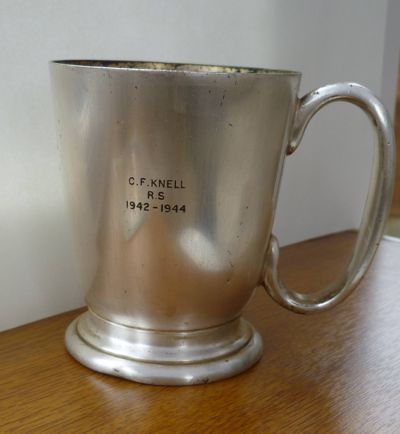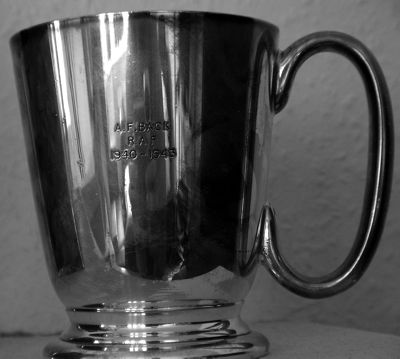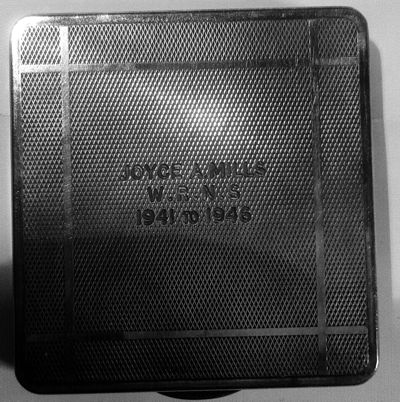Teynham and Lynsted Welcome Home Sports and Social Committee

The S. Mary with S. Andrew Parish Magazine dated June 1941, listed ‘Men on Active Service’ in WWII. Some 116 men are named of which two are recorded as ‘prisoners’. Two further names appear on the ‘Roll of Honour’.
Amongst the names listed are Fred and Hector Knell. On mentioning this to Mr Barry Knell, he told his Dad and for the first time learned that after WWII servicemen returning to the village of Teynham were given a tankard by the parish for their service. He sent us a photograph of his Dad’s tankard, which he had never seen before. It is silver plated and reads C. F. Knell. R.S. (Royal Signals) 1942 - 1944.
We understand that not all servicemen apparently got a tankard (as shown) and instead an equivalent sum of money was donated for/to the Frognal Lane playing field.
The question has been asked “When was the Frognal playing field first used as such? What did these funds actually go towards?”
The above article promted the respose below
My grandmother Eileen Back, living in Brighton, receives the Teynham News as her late husband and my grandfather Albert Back was born in Frognal Lane. As a result I also get to read it.
 WWII Teynham Tankards - What a surprise it was to see a picture of C.F. Knell’s WWII Teynham Tankard in the Summer 2012 edition of Teynham News. This is because all my life an identical one has stood proudly on display in my grandmother’s house since my late Grandfather, Albert Back, who was born in Teynham in 1920, was also given a tankard. He later moved to Brighton. Please see the picture above. It reads ‘A.F.Back, RAF, 1940-1943. I understand his late sister Edwina (Ena) Smith (nee Back) was also given one.
WWII Teynham Tankards - What a surprise it was to see a picture of C.F. Knell’s WWII Teynham Tankard in the Summer 2012 edition of Teynham News. This is because all my life an identical one has stood proudly on display in my grandmother’s house since my late Grandfather, Albert Back, who was born in Teynham in 1920, was also given a tankard. He later moved to Brighton. Please see the picture above. It reads ‘A.F.Back, RAF, 1940-1943. I understand his late sister Edwina (Ena) Smith (nee Back) was also given one.
As to the question of when the Frognal Playing Fields were first used and what the funds actually went towards, I am afraid I cannot say, I am sure Albert would have been able to tell me but sadly he died in 2008. My grandmother does remember that it is true the money did go towards setting up the playing fields.
Steve Kisko
The Editorial Committee had long been aware that tankards had been issued to servicemen returning home from the war and thanks to Barry Knell and Steve Kisko we have been able to see photographs of these above.
It came as a real surprise to us, however, to learn that a powder compact was presented to service women returning home to Teynham. Mrs Joyce Brightman (nee Mills) contacted us and we are pleased to reproduce a photograph of the one presented to her. It is silver plated (Mappin and Webb was the maker) with a shallow well for loose powder or a fitted block of pressed powder and with a very thin powder puff.
Mrs Brightman was in the Women’s Royal Naval Service [WRNS or Wrens] from 1941, when she was called up at the age of 18, until she was demobbed in April 1946. The presentation of the powder compacts and tankards took place at the YMCA Hut (where regular whist drives and dances were held pre-war) at the top of Teynham Lane (Station Road). Mrs Brightman was accompanied by her younger sister, Mary, who was also called up immediately she was 18 and joined the WRNS, and who too was presented with a compact. Mrs Brightman recalls that the hall was very packed.
The Editorial Committee thanks Mrs Brightman for sharing her memories with us.